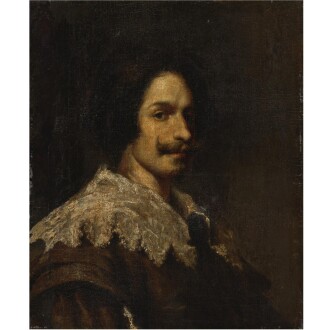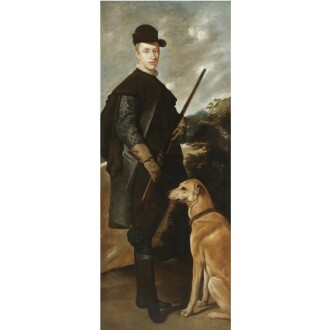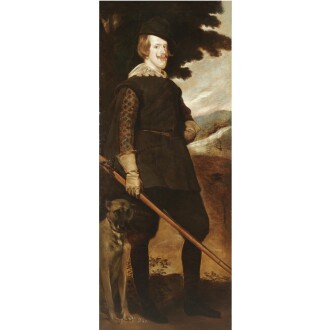Works by Diego Velázquez at Sotheby's
Diego Velázquez Biography
Diego Velázquez was a Spanish master of the 17th century. Although many of his paintings
exude elements of the then contemporary Baroque style, his career was a wide ranging one in which he developed a distinctly individual style. He was best known for his portraiture for the monarchy and court of King Philip IV, as well as the large Spanish royal family, though he also produced scenes from mythology, Christian iconographic works and genre paintings. Artists of the modern era, including Pablo Picasso, Édouard Manet and Salvador Dali, consistently returned to Velázquez’s oeuvre as inspiration, often in artistic dialogue with his works.
Born in 1599 in Seville, Spain, Velázquez studied under Francisco de Herrera, and later
Francisco Pacheco, learning to incorporate Baroque tenebrism into religious imagery and genre scenes. Moving to Madrid in 1622, he secured royal patronage nearly immediately; after less than a year, King Philip IV commissioned him for a portrait, which then assured his annual salary as a court painter. He traveled to Italy on two major expeditions, first in 1628 then again in 1649, which informed the development of his style and career. He studied the works of Titian, Tintoretto, Raphael and Michelangelo, and produced commissioned portraits for major political figures including Pope Innocent X, a portrait that has since become one of Velázquez’s most beloved works. He completed Las Meninas, arguably signaling the culmination of his career, in 1656, presenting a multifaceted portrait of the heir of the Spanish throne and his immediate family. Using mirrors, self-portraiture and a complex labyrinth of gazes, Velázquez organized an introspective painting that questions the nature of representation. Scholars, including Michel Foucault, have continuously used the painting as an exploration into the practice of painting itself. The artist died in 1660 in Madrid.
Velázquez’s oeuvre is a critical fixture in the canon of Western art history, and his works can be found in the permanent collections of the Prado Museum, Madrid, the National Gallery, London, the Metropolitan Museum of Art, New York, and nearly every other major museum in the west.
Read Less











